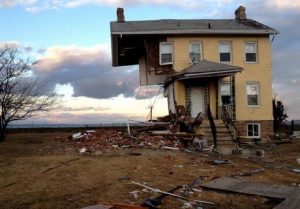
A new bill is going before the assembly which some argue violates the Costa-Hawkins law.
“Rent Control” is a type of municipal law aimed at mitigating the disruptive effect of escalating or fluctuating rental market prices on neighborhoods and individual renters, as well as to promote the maintenance of safe and habitable dwelling units in tight markets with housing shortages. For instance, San Francisco’s Residential Rent Stabilization and Arbitration Ordinance (SFRO), was enacted as an emergency ordinance, amending the San Francisco Administrative Code in 1979, and acknowledged that, in the face of significant increases prior to rent control, "some tenants attempt to pay requested rent increases, but as a consequence must expend less on other necessities of life. This situation has had a detrimental effect on substantial numbers of renters in the City, especially creating hardships on senior citizens, persons on fixed incomes and low and moderate income households."
In 1995, the California Legislature passed and the Governor-signed AB 1164 – a law that is known as the Costa-Hawkins Rental Housing Act. This law cleared the way for owners in rent control communities to establish initial rental rates when there was a change in occupancy of a dwelling unit – a policy known as vacancy decontrol.
While cities and counties continue to maintain the ability to implement local rent control laws, they must follow the parameters established in the Costa-Hawkins Rental Housing Act. At the heart of Costa- Hawkins are a number of basic rules: (1) housing constructed after 1995 must be exempt from local rent controls, (2) new housing that was already exempt from a local rent control law in place before February 1, 1995, must remain exempt, (3) single family homes and other units like condominiums that are separate from the title to any other dwelling units must be exempt from local rent controls, and (4) rental property owners must have the ability to establish their own rental rates when dwelling units change tenancy. The intent of this law was to provide a “moderate” approach to the otherwise “extreme” vacancy control ordinances that were in place during the 1980’s in Berkeley, Santa Monica, Palo Alto, and West Hollywood.
To protect a tenant from an owner’s arbitrary eviction, the state law includes provisions that govern the change in terms of tenancy and thereby the owner’s ability or inability to raise the rent. For specific language, see the California Civil Code, beginning at Section 1954.50.
Despite nearly two decades on the books, there is relatively little case law interpreting Costa-Hawkins and its interaction with local law. Today, a new bill, AB 2502, may be going before the state assembly today that some argue violates the rent control limitations declared in the Costa-Hawkins law.
AB 2502 would amend Section 65850 of the Government Code to allow cities and counties to adopt ordinances that regulate land use and set zoning and building requirements. Of course, cities and counties already have this authority, enacted through the planning and permit process, and the enforcement of General and Specific Plans.
The outcry centers around inclusionary housing requirements. The bill would allow cities and counties to establish inclusionary housing requirements as a condition of development, “which may require the provision of residential units affordable to, and occupied by, owners or tenants whose household incomes do not exceed the limits for moderate income, lower income, very low income, or extremely low income households specified in Sections 50079.5, 50105, and 50106 of the Health and Safety Code.”
Opponents of the bill claim it would weaken the rent control limitations contained in Costa-Hawkins by allowing governments to impose mandatory rent control on newly constructed rental housing without any consideration for the economic viability of the project, arguing that AB 2502 uses “inclusionary zoning” ordinances to allow local governments to require builders to set aside (include) a percentage of units at below-market rent levels. They point to the appellate case Palmer v. The City of Los Angeles, in which the court held that the City of Los Angeles could not use inclusionary zoning to evade Costa-Hawkins.
Supporters argue that inclusionary housing programs have been in place for decades before the Palmer v. The City of Los Angeles ruling in 2009, which stripped the local government of a well-established tool that has provided quality affordable housing to over 80,000 California residents. Nearly 170 cities and counties have some form of inclusionary housing requirement in place as a complement to other local, state, and federal programs to address California’s affordable housing shortage.
If you would like to weigh in on the debate, talk to the Assembly Member! Call Assembly Member, Ridley-Thomas with your opinions: (800) 798-6593




